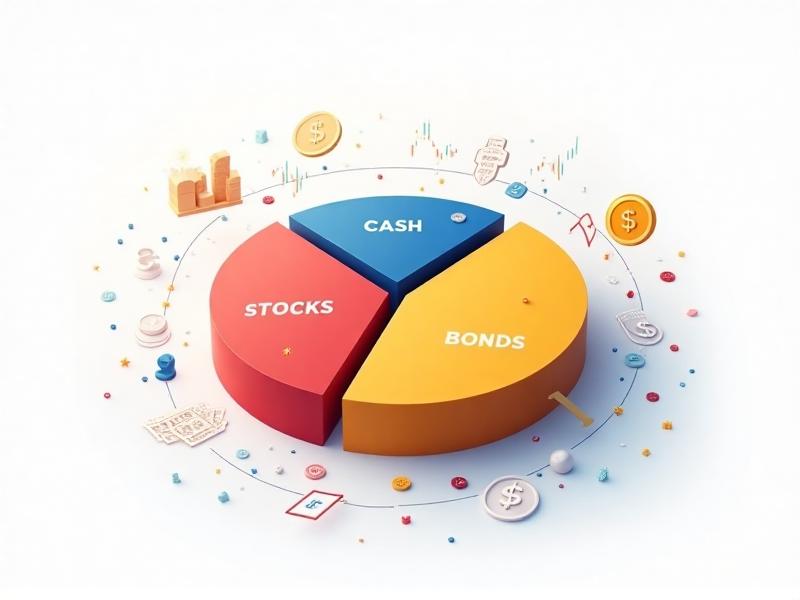Understanding ETFs and Dividend Investing
Exchange-Traded Funds (ETFs) have become a popular investment vehicle for many investors, offering diversification, liquidity, and cost-efficiency. When it comes to dividend investing, ETFs provide a unique opportunity to build a portfolio that generates consistent income. Dividend investing focuses on stocks or funds that pay regular dividends, which are a portion of a company’s earnings distributed to shareholders. ETFs that specialize in dividend-paying stocks allow investors to access a diversified basket of such companies without having to pick individual stocks.
Dividend ETFs typically track an index of dividend-paying stocks, such as the S&P 500 Dividend Aristocrats or the Dow Jones U.S. Dividend 100 Index. These indices include companies with a history of consistently increasing their dividends, making them attractive for income-focused investors. By investing in dividend ETFs, you can benefit from the stability and income potential of these companies while minimizing the risks associated with individual stock selection.
One of the key advantages of using ETFs for dividend investing is the ability to diversify across sectors and geographies. For example, a dividend ETF might include companies from various industries such as utilities, consumer staples, and financials, reducing the impact of sector-specific downturns. Additionally, some ETFs focus on international dividend-paying stocks, providing exposure to global markets and currencies.
Benefits of Dividend ETFs Over Individual Stocks
Investing in dividend ETFs offers several advantages over buying individual dividend-paying stocks. First and foremost is diversification. When you invest in a single stock, your returns are entirely dependent on the performance of that company. If the company faces financial difficulties or cuts its dividend, your income stream could be significantly impacted. Dividend ETFs, on the other hand, hold a basket of stocks, spreading the risk across multiple companies and sectors.
Another benefit is the ease of access and lower costs. Researching and selecting individual dividend stocks can be time-consuming and requires a deep understanding of the companies and their financial health. ETFs simplify this process by providing a ready-made portfolio of dividend-paying stocks. Additionally, ETFs typically have lower expense ratios compared to actively managed mutual funds, making them a cost-effective option for dividend investors.
Liquidity is another advantage of dividend ETFs. Unlike individual stocks, which may have lower trading volumes, ETFs are traded on major exchanges and can be bought or sold throughout the trading day. This liquidity ensures that you can easily adjust your portfolio as needed, whether to take advantage of market opportunities or to rebalance your investments.
Types of Dividend ETFs to Consider
There are several types of dividend ETFs available, each catering to different investment goals and risk tolerances. One common type is the high-dividend ETF, which focuses on stocks with above-average dividend yields. These ETFs can provide substantial income but may come with higher risk, as companies with very high yields may face financial challenges.
Another option is the dividend growth ETF, which invests in companies with a history of consistently increasing their dividends. These ETFs are ideal for investors seeking long-term income growth, as companies that regularly raise their dividends tend to be financially stable and well-managed. Dividend growth ETFs may have lower yields initially but offer the potential for increasing income over time.
For those interested in international exposure, global dividend ETFs invest in dividend-paying stocks from around the world. These ETFs can provide diversification benefits and access to growing markets, though they may also carry currency risk. Sector-specific dividend ETFs, such as those focused on utilities or real estate, allow investors to target particular industries known for their dividend-paying capabilities.
How to Evaluate Dividend ETFs
When selecting a dividend ETF, it’s important to evaluate several key factors to ensure it aligns with your investment goals. One of the first things to consider is the ETF’s dividend yield, which represents the annual dividend income as a percentage of the ETF’s price. While a higher yield may be attractive, it’s essential to assess the sustainability of the dividends. Look at the underlying companies’ payout ratios, which indicate the proportion of earnings paid out as dividends. A lower payout ratio suggests that the company has room to maintain or increase its dividends.
Another factor to consider is the ETF’s expense ratio, which represents the annual cost of owning the ETF. Lower expense ratios mean more of your investment returns are retained, making them preferable for long-term investors. Additionally, review the ETF’s historical performance, though past performance is not a guarantee of future results. Look for consistent dividend payments and growth over time.
It’s also important to consider the ETF’s diversification and sector allocation. A well-diversified ETF reduces risk by spreading investments across multiple companies and industries. Finally, assess the ETF’s liquidity by looking at its trading volume and bid-ask spread. Higher liquidity ensures that you can easily buy or sell shares without significantly impacting the price.
Strategies for Building a Dividend ETF Portfolio
Building a dividend ETF portfolio requires a strategic approach to ensure it meets your income and growth objectives. One common strategy is to focus on a mix of high-dividend and dividend growth ETFs. High-dividend ETFs can provide immediate income, while dividend growth ETFs offer the potential for increasing income over time. This combination can balance current income needs with long-term growth.
Another strategy is to diversify across sectors and geographies. By including ETFs that focus on different industries and regions, you can reduce the impact of sector-specific or regional downturns. For example, you might combine a U.S.-based dividend ETF with a global dividend ETF to achieve broader diversification.
Rebalancing your portfolio periodically is also important. Over time, the performance of different ETFs may cause your portfolio to drift from its original allocation. Regularly rebalancing ensures that your portfolio remains aligned with your investment goals and risk tolerance. Additionally, consider reinvesting dividends to take advantage of compounding, which can significantly enhance your returns over the long term.
Risks and Challenges of Dividend ETF Investing
While dividend ETFs offer many benefits, they are not without risks. One of the primary risks is interest rate sensitivity. When interest rates rise, dividend-paying stocks, particularly those in sectors like utilities and real estate, may underperform. This is because higher interest rates can make bonds and other fixed-income investments more attractive relative to dividend stocks.
Another risk is dividend cuts. While dividend ETFs hold a diversified basket of stocks, a significant number of companies cutting their dividends can impact the ETF’s overall income. It’s important to monitor the financial health of the underlying companies and the ETF’s dividend history to assess this risk.
Market volatility is another challenge. Like all equity investments, dividend ETFs are subject to market fluctuations. While dividends can provide a buffer during downturns, they may not fully offset declines in the ETF’s price. Investors should be prepared for short-term volatility and focus on the long-term income potential of their dividend ETF portfolio.
Tax Considerations for Dividend ETF Investors
Taxes are an important consideration for dividend ETF investors, as dividends are typically subject to taxation. In many countries, dividends are taxed at a different rate than capital gains, and the tax treatment may vary depending on whether the dividends are qualified or non-qualified. Qualified dividends, which meet specific criteria, are often taxed at a lower rate than non-qualified dividends.
Investors should also be aware of the tax implications of dividend reinvestment. When dividends are reinvested to purchase additional shares of the ETF, they are still considered taxable income. It’s important to keep track of these reinvested dividends for tax reporting purposes.
Additionally, international dividend ETFs may be subject to foreign withholding taxes, which can reduce the net income received. Some countries have tax treaties that allow for a reduction or exemption of withholding taxes, so it’s worth researching the tax implications of any global dividend ETFs you consider.
Conclusion: Building a Sustainable Dividend Income Stream with ETFs
Dividend ETFs offer a powerful tool for building a sustainable income stream while managing risk and achieving diversification. By understanding the different types of dividend ETFs, evaluating their key features, and implementing a strategic approach to portfolio construction, investors can harness the benefits of dividend investing. While there are risks and challenges, careful planning and ongoing monitoring can help mitigate these and ensure that your dividend ETF portfolio remains aligned with your financial goals.
Whether you’re a seasoned investor or just starting out, dividend ETFs provide a flexible and efficient way to generate income and grow your wealth over time. By focusing on quality, diversification, and long-term growth, you can build a portfolio that not only provides consistent income but also stands the test of time.




